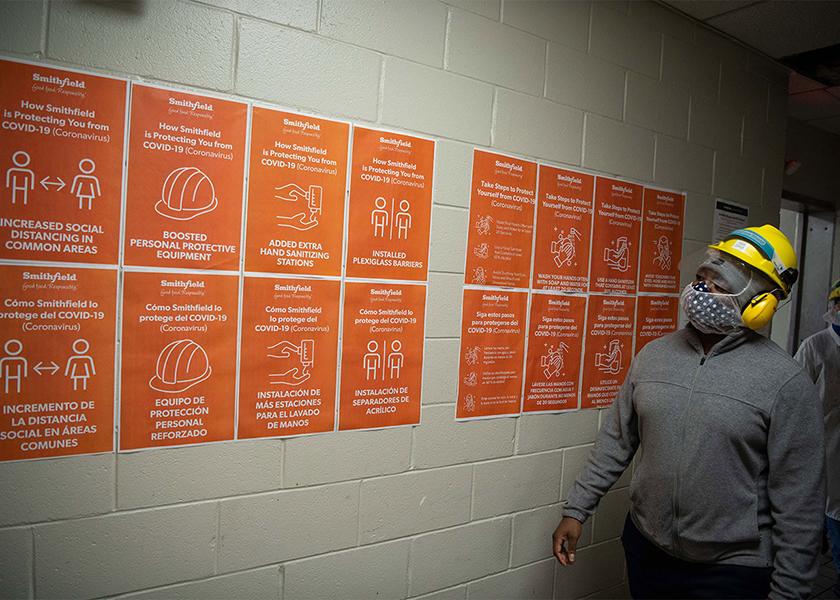COVID-19 Case Rates Still Lower in Packing Plants Than General Population

A new report from the Meat Institute shows new COVID-19 infection rates among meat and poultry workers are 60% lower than in the general U.S. population and two-thirds lower than case rates in the sector in May 2020.
Data from the Food and Environment Reporting Network (FERN) reveals that the meat and poultry sector was reported to have an average of 32.64 new reported cases per 100,000 workers per day in January 2021, two-thirds lower than the average of 98.39 new reported cases per 100,000 workers per day in May 2020.
In January 2021, the New York Times reports the average new case rate for the U.S. population climbed to 78.59 cases per 100,000 people per day, more than 11 times higher than the new case rate in May.
"Meat and poultry workers are substantially less likely to be infected with COVID-19 than the general population as a result of the comprehensive protections instituted since the spring of 2020, when the pandemic’s impact on our sector peaked,” Meat Institute President and CEO Julie Anna Potts said in a release.
The Meat Institute and the United Food & Commercial Workers, America’s largest food workers union, have jointly urged state governors to follow federal guidance and prioritize frontline meat and poultry workers for COVID-19 vaccination.
"Meat Institute members are fully committed to continuing these proven measures and moving forward to vaccinate frontline meat and poultry workers as soon as possible and many can even assist in vaccine distribution for all Americans,” Potts said.
Read more:
COVID-19 Case Rates in Packing Plants Decline as General Population Rate Soars
Worker Absenteeism in Packing Plants is No Surprise
CDC Prioritizes Frontline Meat Workers for COVID-19 Vaccination
Meat Industry Reaches All-Time Low Injury Rate Despite Activist Claims







